Please click ‘Watch on You Tube’ and Like and subscribe COMMENTS WELCOME
EXTRACTS … READ FULL TEXT HERE
It’s All Over Now, Baby Blue is one of Bob Dylan’s most well known songs. It has a beautiful melody, a winning chorus and lyrics that can express many different moods. Dylan has performed it almost five hundred times and there are literally hundreds of cover versions. It presents us with a series of images which could be said to change meaning depending on whether the song is performed wistfully, angrily or with a sense of acceptance. In some ways it can thus be regarded as the quintessential Dylan song – one that means something different to every listener and whose meaning can be changed, varied or teased through the singer’s vocal inflections. Yet, despite performing the song in many different ways, Dylan has never felt the need to adapt or change any of the words.
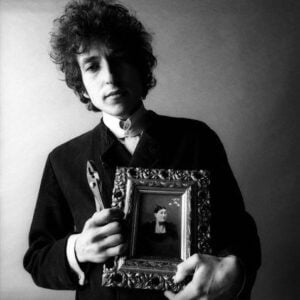
Dylan’s use of language in the song is essentially playful. In choosing a title, Dylan claimed to have been inspired by Gene Vincent’s rock and roll classic Baby Blue, a powerful piece of teen pop. The term ‘baby’ (or ‘babe’) is ubiquitous in the blues, country and other American forms of music as an endearment between lovers – male or female. A great example is Elvis Presley’s seminal Sun sessions recording Baby Let’s Play House (1954), part of which consists of ‘The King’ mumbling and spluttering …baby, baby, baby… There is also a common expression ‘baby blue eyes’, which refers to the term ‘baby blue’, meaning a very light shade of the colour, but can also be used to describe a person who is particularly attractive. The use of the term ‘baby blue’ allows the singer to be sweet and sarcastic at the same time. There is also a strong contrast between the apparent childlike quality of the name and the finality of …It’s All Over Now… (itself the title of an early Rolling Stones hit). Dylan famously has ‘baby blue eyes’, which tends to suggest that the song may be – at least on one level – directed at himself.
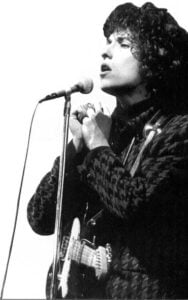
The second verse begins with two of Dylan’s most quotable lines. Although they may be seen, on a more obvious level, as advice to the woman as to how to survive her situation, their resonance goes much further …The highway is for gamblers, better use your sense… Dylan sings …Take what you have gathered from co-incidence… The fusion of blues imagery and Taoist philosophy being expressed here is at the absolute core of Dylan’s poetic method. In the blues the highway is a metaphor for the routes life may take. Gamblers in the blues are wild cards, chancers… The statement ‘the highway is for gamblers’ implies that life itself is a game of chance that should be embraced. The sentiment is mirrored in the famous chorus of Like a Rolling Stone: …How does it feel to be on your own/ Like a complete unknown… In both cases, Dylan celebrates the notion that, for his generation, because of the perceived insanity of the social and political situations they were trapped in, it was necessary to embrace the notion of chaotic chance in order to break away from conventional attitudes and lifestyles.
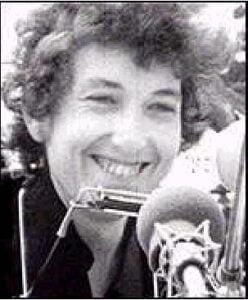
The next couplet presents another symbolic figure. We hear that …The empty handed painter from your streets/ Is drawing crazy patterns on your sheets… On a surface level, this suggests that ‘Baby Blue’ is in contact with the bohemian world of penniless artists. The phrase ‘empty handed painter’ is, like the ‘orphan’ in the previous verse, an image of futility. How can the painter paint if he is ‘empty handed’? The reference to ‘sheets’ seems to suggest that the ‘painter’ is her ex-lover (possibly the narrator himself) who has left her in great confusion. She clearly does not understand the presumably abstract ‘patterns’ which he is presenting to her. The following line …The sky too is folding under you…with its highly emphasised rhymes, is a surreal image further suggesting that Baby Blue’s world is falling apart. Her worldview seems to be characterised by a kind of hallucinatory intensity. Yet the song never sounds negative, despite its apparently pessimistic chorus. Baby Blue’s universe may be collapsing but this may merely open up a portal to a new way of thinking.
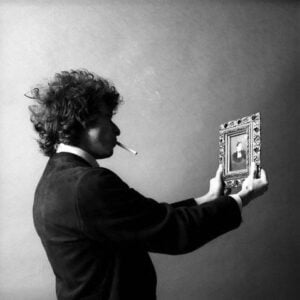
In the third verse the imagery becomes even stranger and more open ended. We first hear that …All your seasick sailors are rowing home… The alliterative and apparently contradictory term ‘seasick sailors’ suggests that the elements in Baby Blue’s life that she normally utilises to maintain her equilibrium are slipping away. This is followed by the bizarre …All your reindeer armies are going home… This phrase appears in all the versions of the song except the official recording on Bringing it All Back Home where Dylan sings ‘empty handed armies’ – clearly an error ass the same phrase appears in the previous verse. Oddly this was not corrected. He sings ‘reindeer armies’ in all the live versions. The phrase ‘reindeer armies’ appears to refer to a group of indigenous Soviet fighters from the north of Siberia who, using reindeer for carriage and sustenance, played a significant part in the fighting against Germany in World War Two. In this case the phrase suggests a very picturesque image of a group of people – who may represent or protect Baby Blue’s security – in retreat. Thus another one of her layers of protection has been removed.
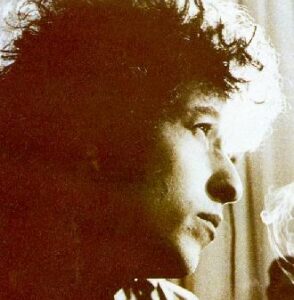
The following couplet…Your lover who just walked out the door/ Has taken all his blankets from the floor… is a more straight forward image of desertion, with the removal of the blankets strongly suggesting that this step is a permanent one. …The carpet too is moving under you… strongly echoes the line about ‘the sky’ from the second verse and is cleverly connected to the idea of blankets being taken ‘from the floor’, indicating that the foundations are shifting under her feet.
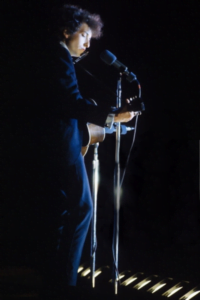
After all these evocations of decay and destruction, the final verse now offers hope. The narrator is now freely offering advice to Baby Blue. …Leave your stepping stones behind… he tells her …something calls for you… The image of ‘stepping stones’ (another alliterative phrase) is a remarkable visualisation of the message the narrator is now conveying. They clearly represent her past life. When crossing a river or stream using stepping stones, one rarely looks back as this might disturb the precarious balance one has established. The image also suggests that the journey that Baby Blue is about to go on is not an easy one. This is followed by the rather haunting …Forget the dead you’ve left, they will not follow you… The narrator seems to be imploring Baby Blue to cast off elements of the historical and cultural contexts she has been brought up with, and which have held her back from making progress. He implores her to cast off her insecurities and step forward across those perilous stepping stones into a new life.

The couplet which follows presents another very distinctive and resonant image: …The vagabond who’s rapping at your door/ Is standing in the clothes that you once wore… The couplet includes a brief reference to Poe’s The Raven, which is heard ‘rapping’ at a chamber door. The slightly archaic term ‘vagabond’ conveys an image of a ragged wanderer, dressed here in her ‘hand me downs’. This symbolises the fact that he has left her because of her lack of courage in throwing off the ‘clothing’ of ideas and customs that have held her back. The image also shows the ‘vagabond’ (who may be identified with the orphan, the painter and the lover from previous verses), presenting her with a kind of ‘mirror image’ of herself. It implies that this is how she would look if she had followed his path. Finally he tells her to …Strike another match, go start anew… an effective evocation of the new life she may, if she follows his advice, be starting on very soon.
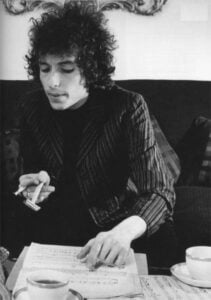
It’s All Over Now, Baby Blue is one of the outstanding examples of the use of symbolism in Dylan’s work. It makes sense on several distinct levels. It is the cry of a departing lover to his love, appealing to her to accept the fact that he is leaving her. The song also works as an invocation to an individual to step out of a conventional existence, to accept the random nature of life and to take risks in accepting that ‘the highway is for gamblers’. Baby Blue is being urged to have faith in her own potential and trust in providence to save her. The song can thus be seen, like Like a Rolling Stone, to have a strong generational resonance. The ‘stepping stones’ that Baby Blue needs to complete her journey on may be slippery, but they lead to a wholly different viewpoint on life free of the repression of conventional culture.
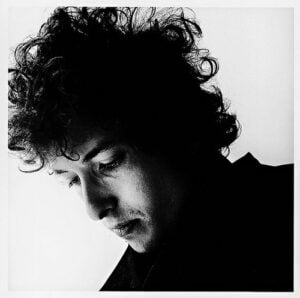
On another level, the song can be seen as Dylan’s message to himself – which was especially relevant as he was then engaged in a highly controversial musical and personal transition, from ‘protest singer’ to visionary poet and counter cultural avatar. Equally, the song could be seen as being directed at those ‘fans’ who rejected his change in style. This possible interpretation was thrown into considerable relief at the Newport Folk Festival in 1965 when, after delivering his historic three song ‘electric’ set Dylan returned to the stage with his acoustic guitar to confront a partly hostile audience. After a crowd pleasing Mr. Tambourine Man he finished his set with a withering version of Baby Blue which appeared to be directed at the disbelieving crowd. The crowd responded enthusiastically, obviously pleased to hear what many regarded as ‘the real Bob Dylan’. How many of them understood the ironic significance of the song is open to question.


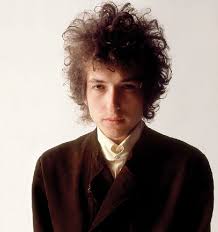
Leave a Reply